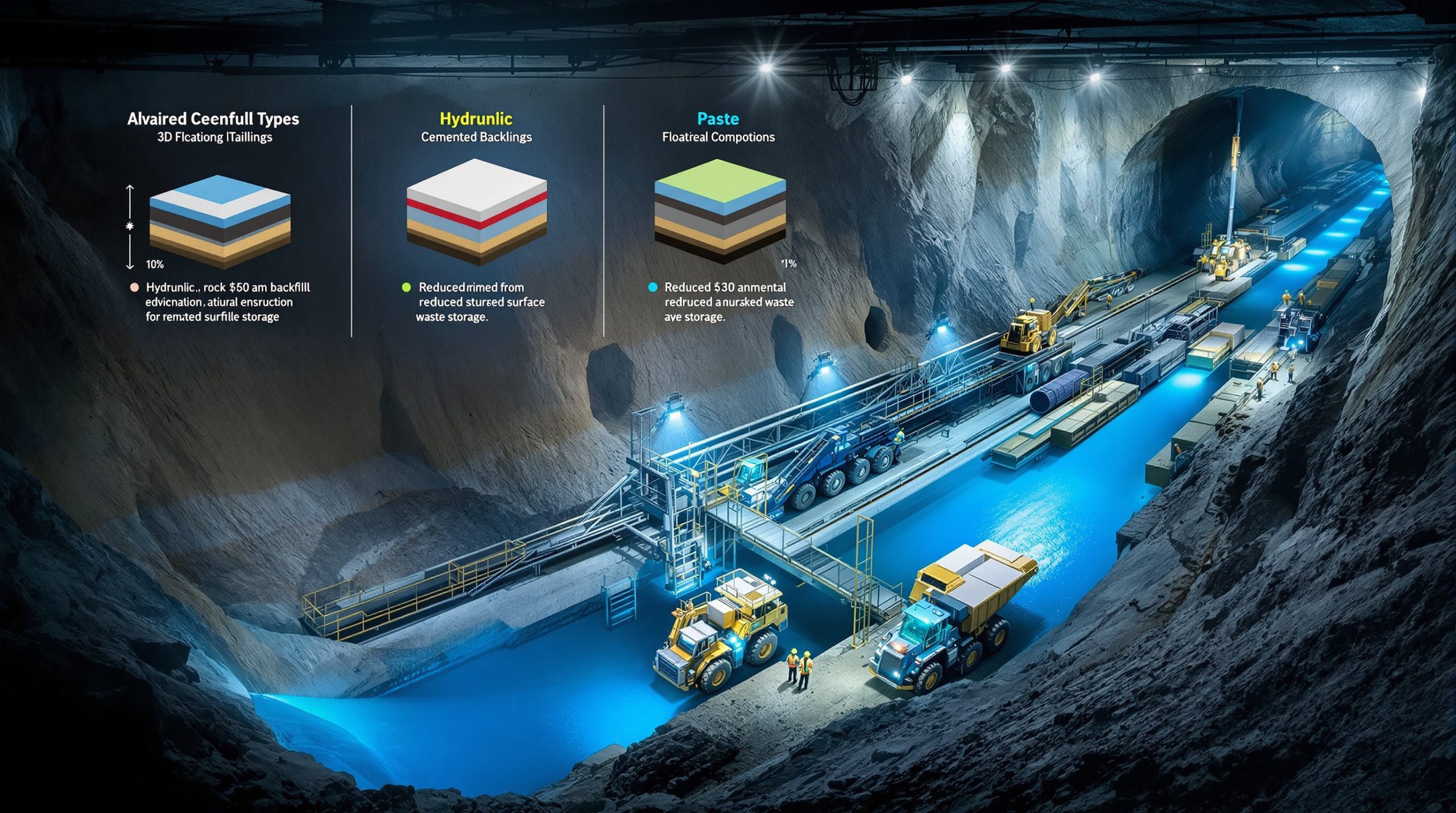How Are Chinese Copper Smelters Achieving Decade-High Profits in 2025?
Chinese copper smelters are enjoying their most profitable period in over a decade, with major players reporting exceptional earnings that stand in stark contrast to the struggles faced by international competitors. This remarkable performance comes at a time when the global copper industry is experiencing significant supply constraints and market volatility.
Record-Breaking Financial Performance
Chinese copper producers have posted impressive financial results in the first half of 2025, setting new benchmarks for profitability across the industry. Jiangxi Copper Co., China's largest refined copper producer, reported a net income of 4.17 billion yuan ($585 million) in H1 2025—its strongest result since 2011. Similarly, Yunnan Copper Co. achieved record earnings of 1.32 billion yuan during the same period, highlighting the robust financial health of China's major copper producers.
These standout financial performances have established new industry benchmarks, with profit margins reaching multi-year highs across most major Chinese producers. The financial success demonstrates remarkable resilience in a sector where many international players are facing significant headwinds.
What Market Conditions Are Driving Chinese Smelter Profitability?
Metal Price Appreciation
The global copper market has experienced significant upward price movement, creating favorable conditions for producers with strong operational foundations. Copper prices climbed approximately 13% during the first half of 2025, providing a substantial boost to revenue streams for Chinese smelters.
This price appreciation has been driven by sustained demand from infrastructure projects and the renewable energy sector, which continue to require substantial copper inputs despite broader macroeconomic uncertainties. For vertically integrated companies with their own mining operations, these price increases have created a healthy profit margin relative to production costs.
Recent copper price predictions suggest this trend may continue, further supporting the profitability of well-positioned producers in the coming quarters.
Byproduct Revenue Streams
A critical factor in Chinese smelters' exceptional profitability has been the strong performance of byproduct markets, particularly sulfuric acid. Industry experts note that revenues from sulfuric acid have reached near three-year highs, providing a crucial secondary revenue stream that significantly enhances overall profitability.
| Byproduct | Price Trend (2025) | Contribution to Profitability |
|---|---|---|
| Sulfuric Acid | Near three-year highs | Major revenue supplement |
| Precious Metals | Strong performance | Significant margin enhancement |
| Other Metals | Stable to positive | Incremental profit contribution |
The sulfuric acid market deserves special attention, as strong demand from China's chemical and agricultural sectors has pushed prices up significantly. This often-overlooked revenue stream has become increasingly important, with some analysts suggesting it has pulled break-even treatment charges close to zero for many operations.
How Have Chinese Smelters Maintained Output Despite Global Concentrate Shortages?
Production Volume Records
Despite global constraints on copper concentrate supply, Chinese smelters achieved impressive production metrics through the first half of 2025. Industry data shows monthly refined copper output consistently exceeding 1.3 million tons during peak periods, with production hitting successive records before beginning to moderate in July.
This exceptional output performance demonstrates the operational resilience of Chinese smelters even as the global industry faces what experts describe as "cut-throat competition with too many firms bidding for not enough ore."
Supply Chain Adaptations
Chinese producers have implemented several innovative strategies to maintain throughput despite the global concentrate shortage. These adaptations include increased utilization of copper scrap and secondary materials, which has reduced reliance on primary concentrate supplies during periods of market tightness.
Additionally, Chinese smelters have pioneered enhanced blending techniques that allow for processing of lower-grade concentrates that might be considered uneconomical by international competitors. This technical flexibility, combined with strategic stockpiling during periods of improved availability, has enabled Chinese operations to maintain high utilization rates while many international smelters have been forced to reduce production.
Technological innovations in metallurgical processing have further expanded the range of feedstock materials that can be efficiently processed, creating additional operational flexibility during supply disruptions.
What Competitive Advantages Do Chinese Copper Smelters Possess?
Vertical Integration Benefits
Many of China's most profitable copper producers benefit from significant vertical integration, particularly those with their own mining operations. This integration provides secure concentrate supply during market tightness and reduces exposure to the volatile treatment charge market that has severely impacted standalone smelters.
Vertical integration enables these companies to capture value across the entire production chain, from mining through refining to product marketing. As noted by industry analyst Zhao Yongcheng of Benchmark Mineral Intelligence, "For those with their own mines, the gains from higher copper prices have been significant. At current levels, there's still a healthy profit margin relative to mining costs."
This integrated approach has proven especially valuable during the current period of concentrate scarcity, allowing these companies to avoid the worst impacts of negative treatment charges while benefiting from higher refined copper prices.
Scale and Efficiency Advantages
The scale of Chinese operations provides several competitive benefits that enhance financial performance. Larger operations typically achieve lower per-unit operating costs through economies of scale, spreading fixed costs across greater production volumes.
This scale advantage extends to procurement and sales, where larger operations can negotiate more favorable terms with suppliers and customers. Additionally, major Chinese smelters have demonstrated the ability to invest in cutting-edge processing technologies that improve recovery rates, reduce energy consumption, and enhance byproduct monetization.
These efficiency advantages have become increasingly important as the global industry faces margin pressure, allowing Chinese operations to maintain profitability even as international competitors struggle with challenging market conditions.
What Challenges Threaten Chinese Smelters' Continued Profitability?
Treatment Charge Pressures
Despite strong overall performance, Chinese smelters face significant challenges in the concentrate market that could impact future profitability. Spot treatment charges (TCs) remain deeply negative, reflecting the intense competition for limited concentrate supplies. In June 2025, Chinese smelters agreed to set TCs at zero, establishing a record low for term fees.
This treatment charge environment represents a fundamental challenge to traditional smelting economics, which have historically relied on processing fees as a core revenue component. The continued deterioration of TC/RC terms has forced smelters to place greater emphasis on other profit drivers, including metal price appreciation and byproduct revenues.
As global competition for concentrate intensifies, there remains significant risk of further deterioration in processing economics, particularly if byproduct markets weaken or metal prices moderate.
Regulatory and Policy Headwinds
Government initiatives to address industrial overcapacity have created new uncertainties for Chinese copper smelters. Beijing began efforts to tackle excess production and reduce supply gluts across various industrial sectors in mid-2025, with impacts already visible in July production data, which showed the first retreat after months of record output.
These regulatory measures could potentially accelerate in response to concerns about overcapacity and environmental impacts, creating operational constraints for even the most profitable producers. Additionally, energy consumption restrictions and environmental compliance requirements continue to add complexity to operational planning and cost structures.
These policy headwinds represent a significant uncertainty factor for the second half of 2025 and beyond, potentially limiting the ability of Chinese smelters to maintain the exceptional performance seen in the first half of the year.
How Are Chinese Smelters Navigating Treatment Charge Challenges?
Breakeven Point Adaptation
Chinese smelters have demonstrated remarkable adaptability in their economic models, successfully lowering operational breakeven points to function profitably even with historically low treatment charges. This adaptation has been achieved through a combination of operational optimizations and revenue diversification strategies.
Industry analyst Zhao Yongcheng notes that "lucrative sulfuric acid sales have pulled their break-even TCs to close to zero," allowing operations to maintain positive cash flow even under challenging market conditions. This reduced dependence on treatment charges represents a significant evolution in the smelting business model, particularly compared to international competitors that have been slower to adapt.
Cost-cutting measures across production processes have further enhanced resilience, with Chinese smelters implementing energy efficiency improvements, automation technologies, and process optimizations that reduce operational expenses without compromising production capabilities.
Strategic Contract Management
Contract structure has become increasingly important to financial performance in the current market environment. Smelters with higher proportions of long-term contracts have generally demonstrated greater resilience to spot market volatility, as these agreements provide more stable economics even during periods of market disruption.
As Zhao Yongcheng explains, "If plants are locked into a high proportion of long-term contracts, they can still ensure a degree of positive cash flow" despite challenging spot market conditions. This has placed increased emphasis on strategic partnership development and contract negotiation capabilities as core competitive advantages.
Flexibility in contract terms has also proven valuable, allowing smelters to adapt to changing market conditions while maintaining operational stability. This includes mechanisms for adjusting processing terms based on byproduct market conditions, metal price movements, and concentrate quality variations.
What Is the Outlook for Chinese Copper Smelters in Late 2025 and Beyond?
Second-Half 2025 Projections
Industry analysts anticipate evolving conditions for Chinese smelters through the remainder of 2025, with most expecting some moderation from the exceptional performance seen in the first half. According to Zhao Yongcheng, "Chinese smelter profits will inevitably come under pressure in the second half" as various market and regulatory factors converge.
However, this pressure is unlikely to result in widespread financial distress, particularly for well-positioned operators with strong byproduct revenue streams and favorable contract positions. Companies with higher proportions of long-term contracts and strong operational fundamentals should maintain positive cash flow even if spot market conditions deteriorate further.
The degree of government intervention in addressing overcapacity concerns remains a critical variable, with potential for production curtailments if Beijing intensifies efforts to reduce supply gluts across industrial sectors. Early signs of this impact were already visible in July 2025 production data, which showed the first retreat after months of record output.
Understanding copper supply gap insights is becoming increasingly important for industry participants navigating these complex market dynamics.
Long-Term Industry Dynamics
Several factors will shape the future landscape for Chinese copper smelters beyond 2025. The global copper market is projected to maintain supply deficits through the remainder of the decade, supporting metal prices even as new mining projects eventually come online. This fundamental market dynamic should provide a supportive pricing environment for efficient producers.
Industry rationalization is likely to accelerate, with less competitive operations facing increasing pressure as treatment charges remain challenging. This could potentially lead to consolidation within the Chinese smelting sector, with stronger players acquiring distressed assets to enhance scale and operational synergies.
The importance of recycled copper in the supply mix will continue to grow, potentially alleviating some of the concentrate shortage challenges while creating new opportunities for technically advanced smelters capable of efficiently processing secondary materials. Chinese operators have generally led in developing these capabilities, positioning them favorably for this market evolution.
Environmental performance and sustainability metrics will gain increasing importance, both from regulatory compliance and market differentiation perspectives. Operations with advanced environmental controls and lower carbon footprints will likely enjoy competitive advantages as sustainability requirements intensify globally.
How Does China's Smelting Success Impact the Global Copper Industry?
Market Balance Implications
China's continued production growth has significant implications for global copper markets, helping to sustain refined copper supply despite upstream concentrate constraints. This production resilience has prevented more severe market tightness that might otherwise have resulted from the global concentrate shortage.
The technical and economic adaptations pioneered by Chinese smelters are potentially accelerating the transition to a more recycling-focused industry, as demonstrated capabilities in processing secondary materials reduce reliance on primary mining output. This transition could fundamentally reshape industry structure over time, with increasing emphasis on closed-loop material flows.
Chinese production decisions have become increasingly influential for global price dynamics, with output changes quickly reflected in market sentiment and trading patterns. This influence extends beyond China's borders, affecting industry participants worldwide through price movements and market balances.
The evolution of relationships between miners and smelters is also being reshaped, with traditional pricing models under pressure as concentrate scarcity shifts negotiating leverage and economic models adapt to new realities. This evolution may lead to more innovative partnership structures that better align interests across the value chain.
The ongoing trade war copper price impact adds another layer of complexity to an already challenging market environment.
Competitive Response Necessities
International smelters face difficult strategic choices in response to Chinese success in the current challenging environment. Many may need to consider consolidation to achieve competitive scale, as standalone operations increasingly struggle with margin pressure and limited negotiating leverage.
Operational efficiency and cost reduction have become existential priorities rather than merely competitive advantages. International operations that fail to match Chinese benchmarks for operational performance face growing risks of financial distress or closure, particularly if treatment charges remain at historically low levels.
Byproduct optimization and recovery have emerged as critical profit drivers, requiring increased technical focus and market expertise that may not have been prioritized historically. Operations with limited byproduct streams or inefficient recovery systems face significant disadvantages in the current market environment.
The strategic reconsideration of vertical integration opportunities is becoming increasingly common, with potential for new partnership models between miners and smelters to share risks and rewards more effectively. This could potentially lead to significant restructuring of corporate boundaries and relationship models throughout the industry.
What Lessons Can the Global Industry Learn from Chinese Smelters' Success?
Adaptability and Resilience
The Chinese experience demonstrates several key success factors that may offer valuable lessons for the broader industry. Flexibility in feedstock procurement and processing has proven critical, with the ability to efficiently handle diverse material types providing significant competitive advantages during supply disruptions.
Diversification of revenue streams beyond primary metal production has emerged as a fundamental resilience factor, reducing vulnerability to any single market dynamic. Operations with well-developed byproduct markets and optimized recovery systems have demonstrated superior financial performance through market cycles.
Operational scale has proven to be an effective buffer against market volatility, providing negotiating leverage, cost advantages, and investment capacity that smaller operations struggle to match. This scale advantage extends beyond production volume to include technical capabilities, market access, and financial resources.
A strategic approach to vertical integration and supply security has delivered significant competitive advantages, though the optimal integration model varies based on specific market circumstances and corporate capabilities. The key insight is the importance of secure access to appropriate feedstock, whether through ownership, partnerships, or innovative contract structures.
Strategic Investment Focus
Chinese smelters' investment priorities reveal important strategic directions that may guide future industry development. Technology enhancements for processing complex concentrates have received significant investment, enabling operations to efficiently handle materials that might be considered marginal or uneconomical under traditional processing approaches.
Byproduct recovery and monetization capabilities have attracted increased focus, with investments in advanced separation technologies, quality enhancement processes, and market development activities. These investments have transformed what were once considered minor revenue streams into major profit contributors.
Recycling infrastructure and secondary material processing have emerged as strategic priorities, reflecting both environmental requirements and practical responses to primary material constraints. These investments position operations to benefit from the growing importance of circular economy models in the metals industry.
Operational efficiency and energy optimization continue to receive substantial investment, with digitalization, automation, and process control enhancements delivering meaningful cost reductions and performance improvements. These investments have become increasingly critical as margin pressures intensify across the industry.
Investors seeking to capitalize on these trends may benefit from exploring various copper investment strategies that align with the evolving industry landscape.
FAQs About China's Copper Smelting Industry
What factors are driving Chinese copper smelters' record profitability?
Chinese copper smelters are benefiting from a combination of high copper prices (up 13% in H1 2025), strong byproduct revenues (particularly from sulfuric acid), operational scale advantages, and vertical integration that reduces exposure to negative treatment charges. Companies with their own mining operations have especially benefited from the healthy margin between production costs and market prices.
How are Chinese smelters maintaining production despite the global concentrate shortage?
They're employing several strategies including increased use of recycled materials, advanced blending techniques for lower-grade concentrates, strategic stockpiling, and technological innovations that allow processing of more diverse feedstocks. These adaptations have allowed Chinese operations to maintain high utilization rates while many international competitors have been forced to reduce production.
Will Chinese smelters maintain their profitability through the second half of 2025?
Industry analysts expect some margin compression in H2 2025 due to persistent treatment charge challenges and government efforts to address industrial overcapacity. However, companies with strong byproduct revenues and favorable contract positions may continue to perform well even as overall industry conditions become more challenging.
How do Chinese smelter economics differ from international competitors?
Chinese smelters benefit from scale economies, vertical integration (especially those with mining operations), strong byproduct markets (particularly sulfuric acid), and operational adaptability that allows them to maintain profitability even with treatment charges approaching zero. Their ability to efficiently process diverse feedstock materials, including secondary sources, provides additional flexibility during supply disruptions.
What impact might China's copper production have on global markets?
China's continued strong production despite global concentrate shortages helps sustain refined copper supply, potentially moderating price increases while simultaneously accelerating industry-wide shifts toward increased recycling and alternative feedstock sources. Chinese production decisions have become increasingly influential for global copper supply forecast and market balances.
Further Exploration:
Readers interested in learning more about developments in the global copper industry can also explore related educational content from MINING.com, which offers regular updates on metal markets, production trends, and industry developments.
Want to Discover the Next Major Copper Stock Opportunity?
Stay ahead of the market with Discovery Alert's proprietary Discovery IQ model, which instantly identifies significant ASX mineral discoveries across copper and 30+ other commodities. Visit our discoveries page to see how historic copper discoveries have generated substantial returns and start your 30-day free trial today.




